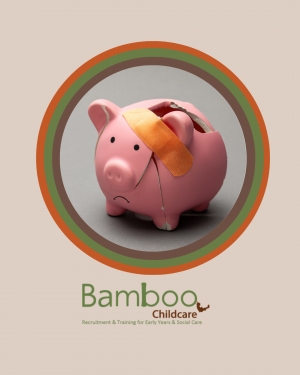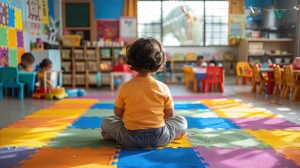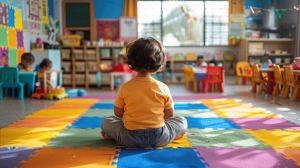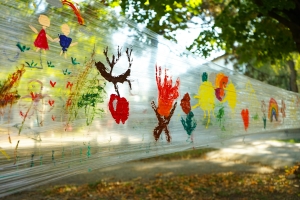Test Owner
Big Changes for Little Ones: What the New Early Years Strategy Means for You
Big Changes for Little Ones: What the New Early Years Strategy Means for You
This week, the government announced a big new plan for early years education called “Giving Every Child the Best Start in Life.” If you’re a parent, carer, or work in childcare, here’s what you need to know – without the jargon.
So, what’s happening?
The government’s putting £1.5 billion into early years services over the next few years. They want to make sure all children – especially those in tougher situations – get the right support from day one.
Here are some of the key things they’re changing:
⭐ Family Hubs everywhere – They’re rolling out up to 1,000 family centres across England. These will be one-stop-shops for parents to get help with everything from baby feeding and mental health support to playgroups and parenting advice.
⭐ More support for nursery staff – Early years professionals will get better training, clearer career paths, and even tax-free bonuses to stay in the sector (especially in areas that need it most).
⭐ School readiness focus – More school nurseries are being opened, and nurseries will be more connected with primary schools to help with smooth transitions for little learners.
⭐ Quicker inspections – New nurseries will now be inspected by Ofsted within 18 months instead of several years later, so parents know sooner what kind of setting they’re choosing.
Why it matters
There’s been a lot of concern lately that too many children are starting school without key skills like speaking, listening, or being able to sit and focus. This new strategy aims to change that – by bringing services together, making life easier for families, and valuing the work early educators do.
Experts say it’s ambitious – and definitely overdue. But they also warn it will only work if the money actually gets where it’s needed, and if different services (like health visitors, nurseries, and schools) can work closely together.
Final thoughts
It’s early days, but this could be a real game-changer for early years. If you’re a parent, educator, or childminder, watch this space – there could be more support (and hopefully less stress!) on the way.
Want a version of this you can send to your staff or parents? I can make a poster or flyer too!
Funding issues in Early Years
Issues with Funding in Early Years Settings
Early years education plays a crucial role in a child's development, but many nurseries, preschools, and childminders are grappling with serious funding issues that hinder both quality and accessibility.
1. Insufficient Government Funding
While many governments offer subsidized childcare or free early education hours, the funding often doesn't cover the actual costs. As a result, providers are left with tough choices: either increase fees for parents or cut back on resources, which can lead to financial strain and a dip in service quality.
2. Rising Operational Costs
With inflation, higher staff wages, and new regulatory demands, operational costs are on the rise. Limited funding means some settings have to close their doors or reduce their capacity, which directly affects families who depend on these essential services.
3. Staff Recruitment and Retention
The combination of low wages and limited opportunities for career advancement leads to high turnover rates among staff. This shortage of experienced practitioners can compromise the quality of care and the stability that children need.
4. Limited Access to Resources and Training
Many providers find it hard to afford updated learning materials, equipment, or staff training. Without these essentials, practitioners struggle to offer engaging and inclusive education experiences.
5. Inequality in Access to Early Years Education
Funding disparities only deepen existing inequalities. Families from disadvantaged backgrounds often find it tough to cover additional childcare costs, which can hinder their children's readiness for school and limit long-term opportunities.
6. Impact of Policy Changes and Economic Uncertainty
Frequent changes in policy and economic instability create an unpredictable funding landscape. Providers are forced to adapt to new regulations constantly, which adds uncertainty and complicates long-term planning.
Potential Solutions
To tackle these issues, governments should consider increasing per-child funding, offering incentives for staff retention, and ensuring that funding aligns with actual costs. Collaborations between the public and private sectors could also pave the way for sustainable funding strategies.
Conclusion
Sufficient funding is essential for delivering high-quality early years education. Without it, both providers and families face significant challenges that can affect children's development. Addressing these funding issues is vital for the future of early education.
Recent Developments in UK Early Years Qualifications
The Department for Education (DfE) has made some big changes to early years qualifications in the UK this February to help tackle workforce shortages and improve early childhood education.
One of the biggest updates is that apprentices aged 19 and over no longer need to have Level 2 English and maths to qualify. This change could allow around 10,000 more apprentices to enter the sector each year. The minimum length of apprenticeships has also been shortened from 12 months to just 8, making it quicker for people to start working in childcare.
Another exciting update is the launch of a three-year Early Years Teacher Degree Apprenticeship, giving staff a chance to earn a degree while working. Plus, an experience-based route has been introduced—this means staff without a formal Level 3 qualification can still gain ‘approved status’ after six months of supervised practice.
To help ease the recruitment crisis, the DfE is also allowing experienced staff without a Level 3 qualification to be counted in staff-to-child ratios, as long as they meet certain criteria.
On top of all this, the DfE has been testing a digital qualification-checking service to help early years providers easily confirm whether staff qualifications meet requirements. The pilot program has been a success, and the full rollout is expected in spring 2025.
These updates are all about making it easier for people to join and stay in the early years workforce while keeping high standards for childcare and education.
Sources: FT.com, TES.com, eyalliance.org.uk, nurseriesandschools.org, nurseryworld.co.uk
Supporting Children in Early Years to Build Resilience
Resilience, the ability to adapt and thrive in the face of challenges and adversity, is a vital life skill that can significantly enhance a child's emotional and psychological well-being. Early childhood is a formative period in a child’s development, making it an ideal time to lay the foundation for resilience. Supporting children in these early years to build resilience can set them on a path to better cope with life's challenges as they grow older. Here are several ways in which we can support children in early years to develop this crucial trait.
1. Fostering Secure Attachments
One of the most important factors in building resilience in young children is the establishment of secure attachments with caregivers, parents, and educators. Secure attachment creates a safe base from which children can explore the world and learn how to manage their emotions. When children feel loved, supported, and safe, they are more likely to develop the confidence to tackle challenges and navigate emotional ups and downs.
Caregivers can foster secure attachments by being emotionally available and responsive to children's needs. This means paying attention to the child's cues, offering comfort when needed, and providing consistent care. Positive interactions, such as hugs, eye contact, and verbal reassurances, can also strengthen this bond, promoting a sense of safety and trust. When children feel secure, they are better able to handle stress and setbacks, knowing they have the support of their caregivers.
2. Teaching Problem-Solving Skills
Resilience involves not only the ability to recover from adversity but also the capacity to find solutions when faced with challenges. Teaching children how to problem-solve effectively is a key way to support their resilience. Encouraging children to approach problems methodically, rather than feeling helpless or overwhelmed, can boost their confidence and ability to tackle difficulties on their own.
Adults can help by presenting challenges in a way that encourages exploration and curiosity. For example, when a child encounters a problem—whether it’s building a tower that keeps falling down or figuring out how to share a toy—caregivers can ask guiding questions: "What could you try next?" or "What else could we do?" By modelling patience and persistence, adults can show children that challenges are opportunities to learn and grow.
3. Promoting Emotional Expression and Regulation
Building resilience also requires children to understand and manage their emotions. Encouraging emotional expression is critical for this development. Children need to know that it is normal to feel frustrated, sad, or anxious, and that they can express these feelings in healthy ways.
Caregivers can model emotional regulation by verbalizing their own emotions and demonstrating how they cope with stress. For example, saying, "I feel frustrated right now, so I’m going to take a few deep breaths," shows children that it’s okay to have difficult emotions and that there are strategies to manage them. Adults should also help children label their emotions, for example, "You seem really upset that the puzzle piece doesn’t fit. It’s okay to feel frustrated."
In addition to emotional expression, teaching calming techniques such as deep breathing, counting to ten, or using a quiet space when overwhelmed can equip children with tools to self-regulate. Over time, children learn to use these techniques to manage their emotions independently, which is a key aspect of resilience.
4. Encouraging Positive Self-Talk and Growth Mindset
Helping children develop a positive inner dialogue is a powerful way to support resilience. Children who learn to use positive self-talk and embrace a growth mindset are more likely to persevere through setbacks and believe in their ability to improve.
Instead of focusing on failure, caregivers can praise effort and persistence. For example, when a child struggles to complete a task, saying things like, "You worked really hard on that" or "I can see you’re trying your best" helps shift the focus away from the result and emphasizes the value of effort. Teaching children that their abilities can grow through practice—"You didn’t get it this time, but you’ll get better with more practice"—helps them view challenges as opportunities for growth rather than insurmountable obstacles.
5. Creating a Safe and Predictable Environment
Resilience thrives in environments that are stable, predictable, and safe. Children who have a sense of security are better able to manage stress and adapt to new situations. Creating a predictable daily routine helps children feel more confident in their environment, reducing anxiety and promoting a sense of control. Knowing what to expect—such as when playtime, meals, and rest occur—provides children with a sense of stability that can buffer against feelings of uncertainty.
In addition to consistency in routine, caregivers can create a physically and emotionally safe environment where children feel free to explore and experiment. This environment should allow children to make mistakes, learn from them, and try again without fear of harsh judgment or criticism. An emotionally safe space fosters resilience by allowing children to experience and learn from setbacks in a supportive, non-threatening way.
6. Promoting Social Connections and Empathy
Social skills and the ability to connect with others are integral to resilience. Children who are able to form positive relationships with peers and adults are better equipped to navigate social challenges and emotional difficulties. Encouraging cooperative play, sharing, and communication helps children develop empathy and social awareness—skills that are essential for building resilience.
Caregivers can support social resilience by teaching children how to resolve conflicts constructively. Role-playing scenarios where children practice sharing, taking turns, and using words to express their feelings can help them develop essential interpersonal skills. Helping children understand how others might feel in a given situation promotes empathy and emotional intelligence, enabling children to manage relationships more effectively.
Conclusion
Building resilience in early years children is not about making them immune to challenges but equipping them with the tools to cope with and learn from adversity. By fostering secure attachments, teaching problem-solving, promoting emotional regulation, encouraging positive self-talk, creating a predictable environment, and supporting social connections, caregivers can help children develop the resilience they need to thrive in the face of life’s inevitable ups and downs. With these foundational skills, children are better prepared to navigate the challenges of childhood, adolescence, and beyond, leading to healthier, more fulfilling lives.
The Case for and Against Building Resilience in Early Years Children to Improve Mental Wellbeing in Later Life
Introduction
The importance of mental wellbeing is increasingly recognised across all ages, with the early years being identified as a crucial period for shaping emotional and psychological health. Proponents of building resilience from a young age argue that fostering resilience in early childhood can lead to better mental wellbeing in later years. However, critics raise concerns about the potential risks of overemphasising resilience too early, suggesting it may have unintended consequences. In this debate, we explore both sides of the argument.
The Case for Building Resilience in Early Years Children
1. Early Intervention Prevents Long-Term Mental Health Issues
Resilience, the ability to bounce back from adversity, is often seen as a protective factor in mental health. Children who develop resilience early are better equipped to handle the challenges of later life, including stress, trauma, and failure. Early interventions, such as teaching coping mechanisms and emotional regulation, can reduce the likelihood of developing mental health issues in adolescence or adulthood. Studies suggest that children with strong social-emotional skills are less likely to experience anxiety, depression, or behavioural problems as they grow older.
2. Brain Development in Early Childhood is Crucial for Emotional Regulation
The early years of a child’s life (0-5 years) are a critical window for brain development, including the regulation of emotions and stress responses. Research shows that nurturing relationships and experiences during this period can lay the foundation for lifelong emotional health. By fostering resilience in early childhood, we help children develop the neurological pathways required to manage stress and recover from setbacks. This can lead to better emotional and mental health outcomes in the future.
3. Building Social Skills and Confidence Early Improves Wellbeing
Resilient children tend to develop a strong sense of self-worth, the ability to form healthy relationships, and a positive mindset, all of which contribute to mental wellbeing. By promoting resilience in early childhood, we encourage children to view challenges as opportunities for growth rather than insurmountable obstacles. This mindset, cultivated from a young age, can lead to greater confidence, self-esteem, and an overall positive outlook on life as children grow older.
4. Reduces the Risk of Adverse Childhood Experiences (ACEs)
Teaching resilience can also play a role in reducing the negative impacts of Adverse Childhood Experiences (ACEs), such as abuse, neglect, and household dysfunction. Children who are taught to navigate these challenges with resilience may be better able to cope with difficult circumstances, reducing the likelihood of lasting emotional and psychological damage. This can mitigate the effects of trauma and improve overall mental wellbeing in adulthood.
The Case Against Building Resilience in Early Years Children
1. Risk of Emotional Overload and Unnecessary Pressure
While building resilience is important, critics argue that there is a danger of placing too much pressure on young children to "bounce back" too quickly from emotional distress. Early childhood is a time for children to experience and express emotions, including sadness, frustration, and fear, without feeling that they must immediately overcome them. Overemphasis on resilience may result in the suppression of valid emotions, leading to potential emotional difficulties later in life, such as difficulties in expressing vulnerability or seeking help.
2. The Importance of a Safe and Supportive Environment
Building resilience cannot be achieved through individual effort alone; it requires a supportive and responsive environment. Advocates for more relaxed approaches to emotional development suggest that too much focus on resilience could obscure the importance of creating safe, nurturing spaces where children feel validated in their emotions. Simply teaching resilience without addressing underlying environmental factors (such as poverty, neglect, or violence) may be ineffective or even harmful.
3. Resilience May Be Inherently Culturally Specific
Some argue that the concept of resilience, as it is often framed in Western educational models, may not be universally applicable. Different cultures have varying views on emotional expression and coping strategies. Imposing a singular idea of "resilience" onto children without considering their cultural and familial context could inadvertently undermine their self-concept and emotional wellbeing. Instead of a one-size-fits-all approach, children may benefit more from being taught skills that align with their cultural context and individual temperaments.
4. Resilience Can Be Overemphasized to the Detriment of Other Skills
Some critics worry that an overfocus on resilience in early childhood might overshadow the development of other critical social and emotional skills, such as empathy, cooperation, or perspective-taking. Building resilience can often focus on "toughening up" children rather than fostering a holistic set of emotional competencies. A balanced approach is necessary to ensure that children also learn the value of compassion, collaboration, and sensitivity to the feelings of others.
Conclusion
Both sides of the debate present compelling arguments. On one hand, fostering resilience in early childhood has the potential to equip children with the tools they need to navigate life's challenges, leading to better mental wellbeing in adulthood. On the other hand, critics caution against an overemphasis on resilience that might inadvertently minimize the importance of emotional expression, individual needs, and cultural differences.
Ultimately, a balanced approach may be key—one that encourages resilience alongside emotional expression, empathy, and a supportive environment. In doing so, we can help children build the emotional tools they need to thrive, both in childhood and as they grow into adulthood.
The Case for and Against Building Resilience in Early Years Children to Improve Mental Wellbeing in Later Life
Introduction
The importance of mental wellbeing is increasingly recognised across all ages, with the early years being identified as a crucial period for shaping emotional and psychological health. Proponents of building resilience from a young age argue that fostering resilience in early childhood can lead to better mental wellbeing in later years. However, critics raise concerns about the potential risks of overemphasising resilience too early, suggesting it may have unintended consequences. In this debate, we explore both sides of the argument.
The Case for Building Resilience in Early Years Children
1. Early Intervention Prevents Long-Term Mental Health Issues
Resilience, the ability to bounce back from adversity, is often seen as a protective factor in mental health. Children who develop resilience early are better equipped to handle the challenges of later life, including stress, trauma, and failure. Early interventions, such as teaching coping mechanisms and emotional regulation, can reduce the likelihood of developing mental health issues in adolescence or adulthood. Studies suggest that children with strong social-emotional skills are less likely to experience anxiety, depression, or behavioural problems as they grow older.
2. Brain Development in Early Childhood is Crucial for Emotional Regulation
The early years of a child’s life (0-5 years) are a critical window for brain development, including the regulation of emotions and stress responses. Research shows that nurturing relationships and experiences during this period can lay the foundation for lifelong emotional health. By fostering resilience in early childhood, we help children develop the neurological pathways required to manage stress and recover from setbacks. This can lead to better emotional and mental health outcomes in the future.
3. Building Social Skills and Confidence Early Improves Wellbeing
Resilient children tend to develop a strong sense of self-worth, the ability to form healthy relationships, and a positive mindset, all of which contribute to mental wellbeing. By promoting resilience in early childhood, we encourage children to view challenges as opportunities for growth rather than insurmountable obstacles. This mindset, cultivated from a young age, can lead to greater confidence, self-esteem, and an overall positive outlook on life as children grow older.
4. Reduces the Risk of Adverse Childhood Experiences (ACEs)
Teaching resilience can also play a role in reducing the negative impacts of Adverse Childhood Experiences (ACEs), such as abuse, neglect, and household dysfunction. Children who are taught to navigate these challenges with resilience may be better able to cope with difficult circumstances, reducing the likelihood of lasting emotional and psychological damage. This can mitigate the effects of trauma and improve overall mental wellbeing in adulthood.
The Case Against Building Resilience in Early Years Children
1. Risk of Emotional Overload and Unnecessary Pressure
While building resilience is important, critics argue that there is a danger of placing too much pressure on young children to "bounce back" too quickly from emotional distress. Early childhood is a time for children to experience and express emotions, including sadness, frustration, and fear, without feeling that they must immediately overcome them. Overemphasis on resilience may result in the suppression of valid emotions, leading to potential emotional difficulties later in life, such as difficulties in expressing vulnerability or seeking help.
2. The Importance of a Safe and Supportive Environment
Building resilience cannot be achieved through individual effort alone; it requires a supportive and responsive environment. Advocates for more relaxed approaches to emotional development suggest that too much focus on resilience could obscure the importance of creating safe, nurturing spaces where children feel validated in their emotions. Simply teaching resilience without addressing underlying environmental factors (such as poverty, neglect, or violence) may be ineffective or even harmful.
3. Resilience May Be Inherently Culturally Specific
Some argue that the concept of resilience, as it is often framed in Western educational models, may not be universally applicable. Different cultures have varying views on emotional expression and coping strategies. Imposing a singular idea of "resilience" onto children without considering their cultural and familial context could inadvertently undermine their self-concept and emotional wellbeing. Instead of a one-size-fits-all approach, children may benefit more from being taught skills that align with their cultural context and individual temperaments.
4. Resilience Can Be Overemphasized to the Detriment of Other Skills
Some critics worry that an overfocus on resilience in early childhood might overshadow the development of other critical social and emotional skills, such as empathy, cooperation, or perspective-taking. Building resilience can often focus on "toughening up" children rather than fostering a holistic set of emotional competencies. A balanced approach is necessary to ensure that children also learn the value of compassion, collaboration, and sensitivity to the feelings of others.
Conclusion
Both sides of the debate present compelling arguments. On one hand, fostering resilience in early childhood has the potential to equip children with the tools they need to navigate life's challenges, leading to better mental wellbeing in adulthood. On the other hand, critics caution against an overemphasis on resilience that might inadvertently minimize the importance of emotional expression, individual needs, and cultural differences.
Ultimately, a balanced approach may be key—one that encourages resilience alongside emotional expression, empathy, and a supportive environment. In doing so, we can help children build the emotional tools they need to thrive, both in childhood and as they grow into adulthood.
Diwali Activities for pre-school Children
Diwali, the vibrant and colorful Hindu festival, brings with it a celebration of light, joy, and togetherness. For nurseries in the UK, Diwali provides a wonderful opportunity to introduce young children to multicultural traditions, fostering respect, curiosity, and excitement for different cultures. Here are some engaging, age-appropriate activities that can be adapted for nurseries, ensuring that Diwali is celebrated in an inclusive and fun way.
1. Storytelling and Circle Time: The Story of Diwali
One of the best ways to introduce young children to Diwali is through storytelling. The tale of Lord Rama and his return to Ayodhya, greeted by rows of glowing lamps, can be simplified for young children and is a great way to capture their imagination.
Activity: Diwali Storytelling
- Gather the children in a circle and share a simple, illustrated storybook about Diwali.
- Highlight the concept of good triumphing over evil and the beauty of family reunion.
- Include interactive elements by asking children to repeat words like “lights” or “celebration” to maintain engagement.
Extended Activity
Encourage the children to “act out” the story. You could create a short play where they get to play different characters or imitate the lighting of diyas. This not only enhances comprehension but also lets them express creativity and build confidence.
2. Arts and Crafts: Making Diyas and Rangoli
Diwali is often symbolized by the lighting of diyas (oil lamps) and colorful rangoli patterns, both of which can be adapted into simple crafts for nursery-age children.
Activity: Clay Diyas
- Provide children with small amounts of air-dry clay and let them shape it into small pots, which can be painted in bright colors once dried.
- For safety, use electric tealights instead of candles.
- This activity allows children to work on their fine motor skills and provides a tangible connection to the Diwali festival.
Activity: Rangoli Art with Coloured Sand or Rice
- Draw simple rangoli patterns on large pieces of paper or plastic trays.
- Let children fill in the designs with colored sand or rice, or even non-toxic paint or crayons.
- Rangoli patterns encourage creativity, hand-eye coordination, and an appreciation for traditional art forms. Children can enjoy the sensory experience while creating something beautiful together.
3. Sensory Play: Exploring the Textures and Scents of Diwali
Young children benefit greatly from sensory play, which can be tailored to represent elements of Diwali.
Activity: Scented Play Dough with Spices
- Make play dough with a hint of cinnamon, cardamom, or clove to introduce children to the warm, festive scents associated with Indian celebrations.
- Provide cookie cutters in the shapes of diya lamps, lotus flowers, or circles for creating rangoli.
- This activity encourages sensory exploration, as children learn to identify different scents and textures while being creative.
Activity: Tactile Rangoli with Lentils and Pulses
- Use trays and provide an assortment of lentils, pulses, and rice in various colors.
- Children can create their own rangoli patterns by arranging the lentils in different ways.
- This activity also introduces them to materials commonly found in Indian households, promoting cultural awareness in a tactile, interactive way.
4. Music and Dance: Celebrating with Movement
Music and dance are intrinsic parts of Diwali celebrations, and children love moving to lively music.
Activity: Bollywood Dance Party
- Play traditional Diwali music or upbeat Bollywood songs and encourage children to dance along.
- You can even show simple dance steps and let children follow along.
- Dancing helps young children develop coordination, rhythm, and self-expression while immersing them in the celebratory spirit of Diwali.
Activity: DIY Musical Instruments
- Help children make simple instruments like shakers using empty plastic bottles filled with lentils or rice.
- Once they have made their instruments, let them play along to traditional music.
- This activity introduces rhythm and musicality, with an added benefit of building creativity through instrument-making.
5. Food Tasting and Cooking Activities: A Taste of Diwali
Food is a big part of Diwali, and a simple, sensory-friendly food tasting can introduce children to new flavors and textures.
Activity: Diwali Sweets Tasting
- Prepare a small selection of traditional Diwali sweets, such as mithai, ladoos, or halwa (all in small, child-friendly portions).
- Discuss the flavors and let children describe what they taste. For added learning, talk about sweetness as a common symbol of happiness in Indian culture.
- Be mindful of allergies and ensure all food is safe and appropriate for young children.
Activity: Making Coconut Ladoos
- A hands-on cooking activity like making coconut ladoos (small, round Indian sweets) is easy, fun, and tasty for little hands.
- Let children help measure and mix desiccated coconut and condensed milk, and form small ladoos with their hands.
- Cooking with children builds essential skills, from understanding ingredients to practicing fine motor skills, while they experience the festive joy of making a traditional treat.
6. Nature and Light Exploration: Creating a Diwali Garden
Diwali, the Festival of Lights, is a wonderful time to teach young children about light and nature.
Activity: Garden Lanterns
- Use small jars to make “lanterns” decorated with tissue paper and safe, child-friendly glue.
- Place battery-operated tealights in the jars, and have the children arrange them in a “Diwali garden.”
- Talk about the significance of lights during Diwali and encourage the children to observe the glow and shadows in a darkened room or garden space.
Activity: Nature Walk and Leaf Printing
- Go on a nature walk and collect autumn leaves.
- Afterward, bring the leaves back to the nursery and use them for leaf-printing art. Encourage children to use bright colors to mimic the vibrancy of Diwali.
- This activity allows children to connect with nature, while the colorful leaves symbolize the beauty of Diwali decorations.
7. Building Cultural Awareness and Inclusion: Sharing Traditions
Diwali activities in nurseries also provide a chance to build a sense of inclusivity and respect for diversity.
Activity: Invite a Family Member or Community Member
- Invite a parent, family member, or local community member to share how they celebrate Diwali at home.
- Children could see a family member in traditional attire or hear about family traditions.
- Engaging with community members helps children understand Diwali as a lived experience, which fosters curiosity and respect for different cultures.
Activity: Diwali Around the World
- Show children a world map and highlight how Diwali is celebrated not only in India but also across the world, in countries such as Nepal, Singapore, and parts of the UK.
- This broadens their understanding of Diwali as a global celebration, making it inclusive for children from various backgrounds.
Final Thoughts
Celebrating Diwali in UK nurseries is a joyful opportunity to introduce children to a world of colors, lights, and tastes, while fostering inclusivity and understanding from an early age. Through storytelling, hands-on crafts, sensory play, music, food, and community engagement, young learners can experience Diwali in ways that are age-appropriate and memorable. In doing so, they’ll gain appreciation for different cultural traditions, building the foundations of respect and curiosity that will benefit them for years to come.
Nurseries that embrace diverse cultural celebrations like Diwali provide invaluable experiences for young children, making early learning environments both inclusive and inspiring. So, let the lights, colors, and spirit of Diwali brighten up your nursery this season and fill young hearts with joy and wonder!
The Pros and Cons of Forest schools
Forest schools in early childhood education have become a growing trend, blending the natural world with child-led, experiential learning. This approach, rooted in Scandinavian educational traditions, emphasizes outdoor play and learning in a woodland or forest environment. While forest schools are often celebrated for fostering creativity, independence, and resilience, there are also concerns around safety, access, and curriculum rigor. In this discussion, we'll explore the pros and cons of forest schools in early years education, assessing their impact on children's development and the broader educational landscape.
Pros of Forest Schools in Early Years
1. Connection to Nature
One of the primary benefits of forest schools is the direct connection children establish with the natural environment. In a world where urbanization and screen time dominate, children are increasingly disconnected from nature. Forest schools offer an antidote, providing opportunities to explore outdoor spaces, learn about ecosystems, and develop an appreciation for the environment. This early exposure often fosters environmental stewardship and encourages a lifelong respect for nature.
2. Physical Development
Spending time outdoors allows children to engage in physical activities that are crucial for their motor development. Forest schools provide opportunities for running, climbing, balancing, and other forms of movement that strengthen muscles and improve coordination. Activities such as building shelters or navigating uneven terrain enhance spatial awareness and fine motor skills. Additionally, the varied and unpredictable outdoor environment challenges children to assess risks and navigate physical challenges, which can boost their confidence and resilience.
3. Social and Emotional Growth
The collaborative nature of forest school activities encourages teamwork, communication, and social interaction. Children work together on projects such as building dens or identifying plants, fostering cooperation and problem-solving skills. Moreover, forest schools promote emotional resilience. The natural environment, with its ever-changing weather and conditions, teaches children adaptability and persistence. These experiences in managing unpredictability help build emotional strength, which can benefit children in future academic and social situations.
4. Creativity and Imagination
Outdoor play in forest schools is often unstructured, allowing children to use their imaginations to create their own learning experiences. Natural materials like sticks, stones, and leaves become tools for creative play, fostering innovation and problem-solving. This type of play is less constrained by rules and regulations, giving children the freedom to experiment, which can enhance cognitive development and imaginative thinking.
5. Child-Led Learning
Forest schools embrace a child-centred approach, where learning is directed by the children's interests rather than a predetermined curriculum. This aligns with the idea of inquiry-based learning, where children explore subjects they are curious about, leading to deeper engagement and understanding. This autonomy encourages children to take responsibility for their learning and fosters a sense of independence.
Cons of Forest Schools in Early Years
1. Safety Concerns
One of the most cited criticisms of forest schools is the perceived risk of accidents or injuries. The natural environment, with its uneven terrain, wild plants, and unpredictable weather, can be hazardous for young children. While proponents argue that supervised risk-taking is beneficial for development, detractors worry about the potential for falls, insect bites, or encounters with dangerous plants. Some parents and educators may be uneasy about the safety protocols in place, fearing that the forest environment is too uncontrolled for young learners.
2. Lack of Structured Curriculum
Another point of contention is the potential lack of academic structure in forest schools. Traditional early years education often follows a specific curriculum designed to develop foundational skills in literacy, numeracy, and other key areas. Critics argue that forest schools, with their emphasis on unstructured, play-based learning, might not adequately prepare children for more formal schooling. There are concerns that without explicit instruction in academic subjects, children might fall behind their peers in traditional settings.
3. Access and Inclusivity
Forest schools tend to require access to natural spaces, which can be a significant barrier for children living in urban or low-income areas. The logistics of transporting children to forest sites can be expensive and time-consuming, making it difficult for some schools to implement. Additionally, children with physical disabilities or health conditions that make outdoor activities challenging may be excluded from fully participating, raising concerns about inclusivity and equal access to forest school experiences.
4. Weather Dependence
The success of forest schools is often dependent on the weather. In climates with extreme weather conditions, outdoor learning may be limited or uncomfortable. While forest schools generally advocate for children to experience all weather conditions, persistent rain, cold, or heat can be a deterrent for some children and educators. Maintaining engagement in adverse weather can be challenging, and there is a risk that children may become discouraged or uninterested.
5. Parental Concerns and Misunderstandings
Not all parents are familiar with the forest school approach, and some may have reservations about its efficacy. There can be a misunderstanding that outdoor learning is less valuable than traditional classroom-based education. Parents may worry that their child is "just playing" and not gaining the academic skills they need for future success. This skepticism can be a barrier to the widespread adoption of forest schools, particularly in communities where traditional education models are deeply ingrained.
Conclusion
Forest schools offer a unique and valuable approach to early years education, emphasizing child-led learning, creativity, and a connection to nature. The benefits of physical development, emotional resilience, and environmental stewardship are clear. However, concerns about safety, curriculum rigor, and accessibility remain valid challenges. The success of forest schools largely depends on balancing these concerns with the educational philosophy that values experiential, hands-on learning. For families and educators committed to fostering well-rounded, resilient children, forest schools provide an enriching option, but it may not be the right fit for every child or community. Ultimately, a blended approach that incorporates elements of both forest schools and traditional education may offer the best of both worlds, ensuring that children develop holistically while also meeting academic benchmarks.
The Importance of Wellbeing in Early Years

The wellbeing of staff in early years education is a critical aspect of creating a healthy, productive, and positive learning environment for children. Early years practitioners play a vital role in shaping the experiences of young children during their formative years. Ensuring the wellbeing of these educators directly impacts the quality of care and education that children receive. This importance can be understood through several key factors: job satisfaction, mental health, retention, and the overall quality of the early years setting.
Impact on Children's Development
Staff wellbeing in early years settings is closely tied to the development and well-being of the children they care for. Educators who are emotionally and physically well are better equipped to provide high-quality care, foster positive relationships, and create nurturing environments where children feel safe and supported. In contrast, when staff are stressed, overworked, or struggling with their mental health, it can negatively affect their ability to engage with children effectively. Young children are highly perceptive, and they pick up on the emotional states of the adults around them. A stressed or overwhelmed practitioner may unintentionally pass on negative emotions, leading to an anxious or unsettled atmosphere.
For young children, emotional security and positive relationships are crucial for their social, emotional, and cognitive development. A well-supported, happy, and motivated staff will have the emotional capacity to build strong bonds with the children, helping them feel valued and understood. This, in turn, enhances children's learning outcomes and overall wellbeing.
Job Satisfaction and Retention
Staff wellbeing also plays a significant role in job satisfaction and staff retention. The early years sector in the UK is known for its high turnover rates, with many practitioners leaving the profession due to stress, low pay, and limited professional development opportunities. This turnover disrupts the consistency and continuity of care, which can affect children's ability to form secure attachments with adults. Additionally, constant staff changes can place added pressure on remaining staff members, leading to a cycle of burnout and further turnover.
When early years settings prioritise staff wellbeing, they are more likely to retain experienced and qualified staff. A positive work environment that promotes staff wellbeing can include offering competitive salaries, providing opportunities for professional growth, ensuring manageable workloads, and fostering a supportive team culture. When staff feel valued and respected, they are more likely to stay committed to their roles, which benefits the stability of the setting and the quality of care provided to children.
Mental Health and Stress Management
The early years sector is emotionally demanding. Practitioners are responsible for the safety, education, and emotional well-being of young children, often within a fast-paced and high-pressure environment. Staff wellbeing initiatives that focus on mental health and stress management are essential to prevent burnout. Offering access to counselling services, mental health training, and regular check-ins with supervisors can help staff manage stress and maintain emotional resilience.
Providing opportunities for reflection, peer support, and team-building activities can also foster a sense of community among staff, which is crucial for their mental and emotional wellbeing. When staff feel supported by their colleagues and management, they are better able to handle the challenges that arise in their roles.
Promoting a Positive Work Environment
A culture that values staff wellbeing creates a positive work environment where practitioners feel empowered and motivated. Early years leaders play a key role in setting the tone for the workplace culture. By promoting work-life balance, encouraging self-care, and recognising the contributions of their staff, leaders can create an atmosphere where wellbeing is prioritised.
In conclusion, the wellbeing of early years staff is crucial for the success of both practitioners and the children in their care. A focus on staff wellbeing enhances the overall quality of early years settings, supports children's development, and fosters a more stable and committed workforce. Prioritising the mental, emotional, and physical health of early years educators is essential for creating nurturing, high-quality learning environments.
Technology in Early Years
In the United Kingdom, technology has had a profound impact on early childhood education, shaping both learning environments and pedagogical approaches. Early years, defined as the period from birth to age five, is a critical phase in a child’s development. During these formative years, technology has increasingly played a role in supporting and enhancing cognitive, social, and emotional growth. However, the impact of technology in early years education is multifaceted, with both positive contributions and notable challenges.
Enhanced Learning Opportunities
One of the primary benefits of technology in early years education is its ability to provide engaging and interactive learning experiences. Tablets, educational apps, and interactive whiteboards allow children to explore learning concepts in a dynamic, multisensory manner. For example, educational apps designed for phonics, numeracy, and problem-solving enable children to practice essential skills at their own pace. These tools can make abstract concepts more concrete and accessible to young learners, helping them build a strong foundation for future academic success.
In addition, technology offers children access to a wider range of resources than traditional learning methods. For instance, digital storytelling tools and interactive books engage children in narratives that stimulate their imagination and creativity. In doing so, technology encourages language development and literacy skills, which are key areas of focus in the early years curriculum in the UK.
Personalised Learning
Technology can also facilitate personalised learning, which is particularly beneficial for young children, whose developmental stages and learning preferences vary widely. Digital platforms and apps can adapt to the individual needs of each child, offering activities that match their learning level. This personalisation ensures that children receive appropriate challenges, helping them progress without feeling overwhelmed. Teachers can use digital tools to track each child's progress, identify areas that need improvement, and provide targeted interventions where necessary.
Moreover, technology enables educators to monitor a child’s progress in real-time and adjust lesson plans accordingly. This flexibility allows for more responsive teaching, enhancing the effectiveness of early years education.
Social and Emotional Development
While technology offers many learning benefits, its impact on social and emotional development has been a subject of debate. Critics argue that excessive screen time can detract from valuable face-to-face interactions, which are essential for developing communication skills, empathy, and emotional intelligence. Research indicates that young children learn best through play, physical activity, and social engagement with peers and adults. There is concern that over-reliance on digital devices might hinder opportunities for such interactions.
However, when used appropriately, technology can also support social development. Educational games and collaborative apps encourage children to work together, share, and communicate, promoting teamwork and cooperation. Additionally, video platforms can be used to maintain family connections, particularly when relatives live far away, helping children build emotional bonds.
The Role of Early years Educators and Parents
The effective integration of technology in early years education depends heavily on the role of educators and parents. Educators need to be equipped with the skills and knowledge to use technology effectively in the classroom. Training in digital literacy and the pedagogical uses of technology is essential to ensure that tech-enhanced learning is purposeful and developmentally appropriate. In the UK, the Early Years Foundation Stage (EYFS) framework encourages practitioners to use technology to support learning, provided it is done in a balanced way.
Parents also play a crucial role in mediating the use of technology at home. While educational apps and games can reinforce learning, it is important that screen time is moderated and balanced with other activities, such as outdoor play, reading, and hands-on learning experiences.
Conclusion
The impact of technology in early years education in the UK is significant and continues to evolve. While it presents opportunities for enhanced and personalised learning, it must be implemented carefully to ensure that it supports, rather than hinders, social and emotional development. A balanced approach that integrates technology into broader pedagogical strategies, while also encouraging play and real-world interactions, will be key to maximising the benefits for young children’s growth and development.









07970 294 680